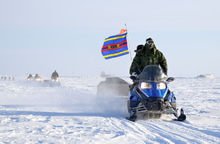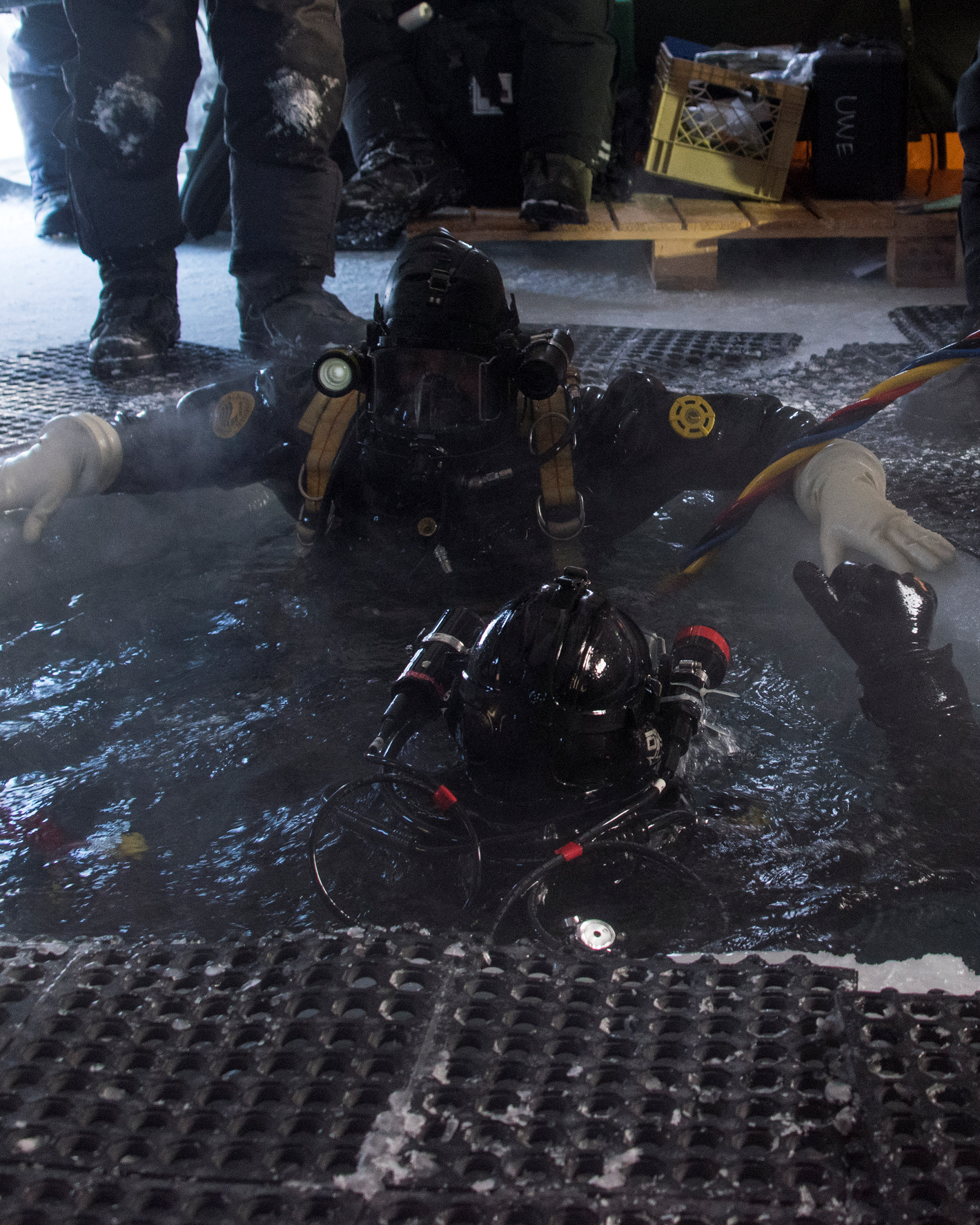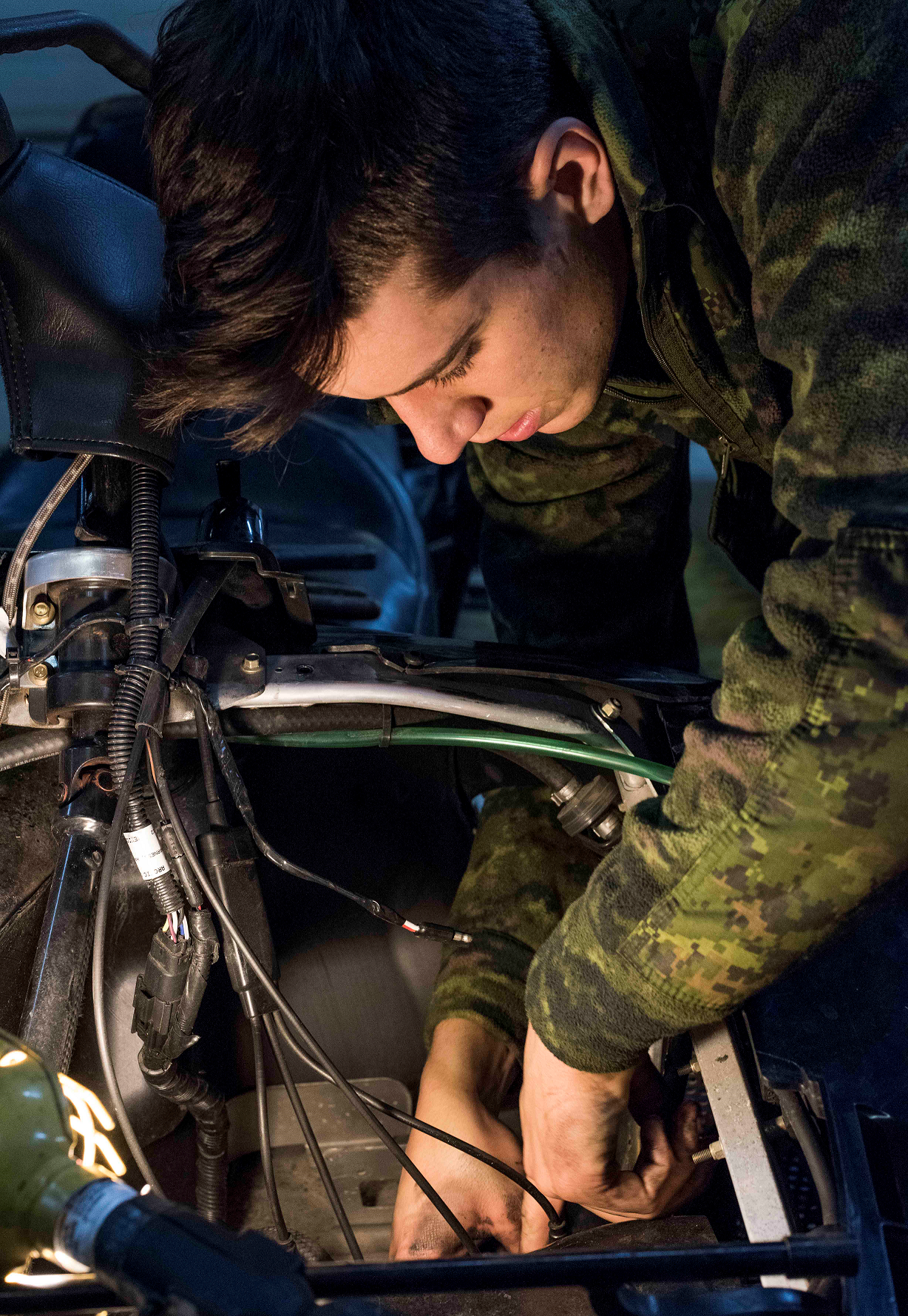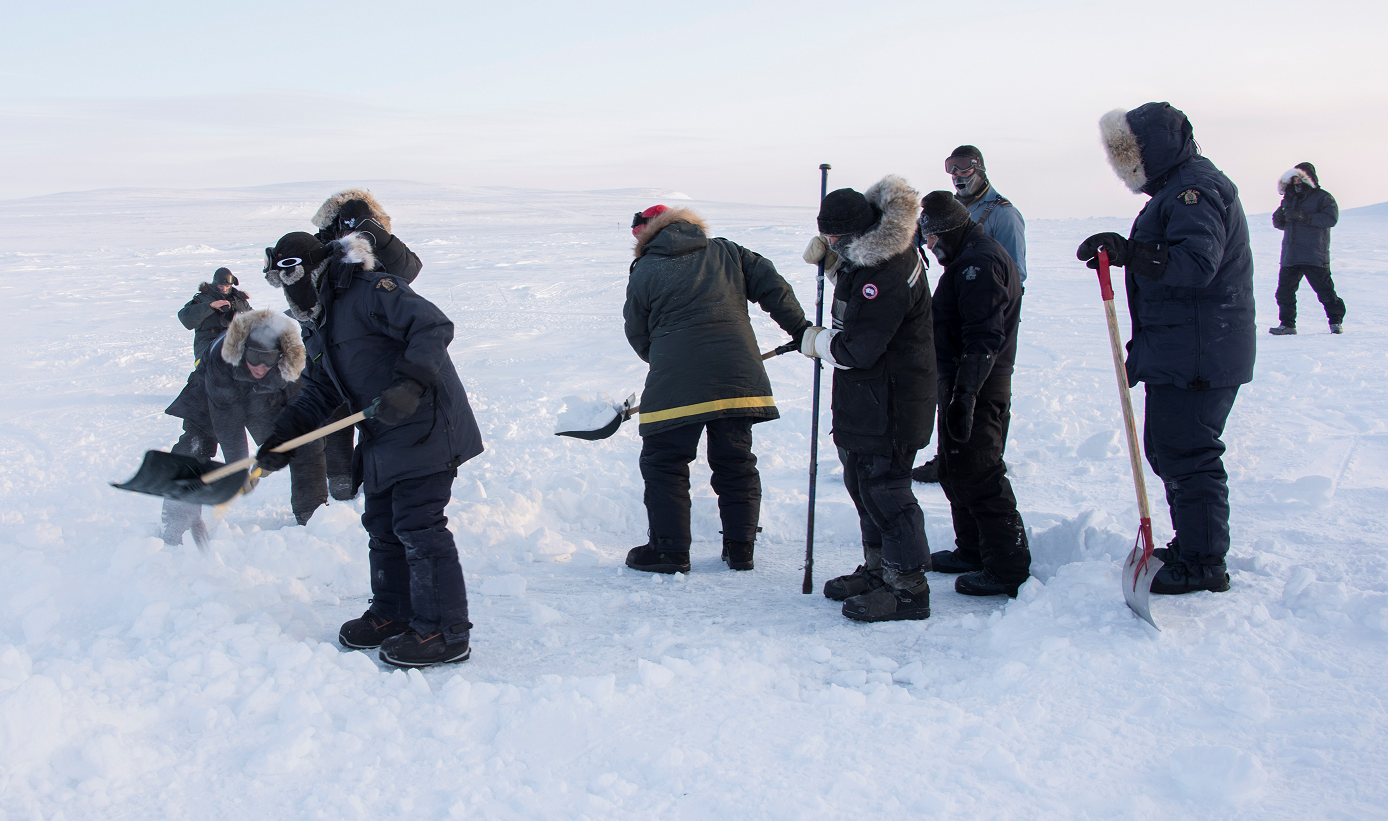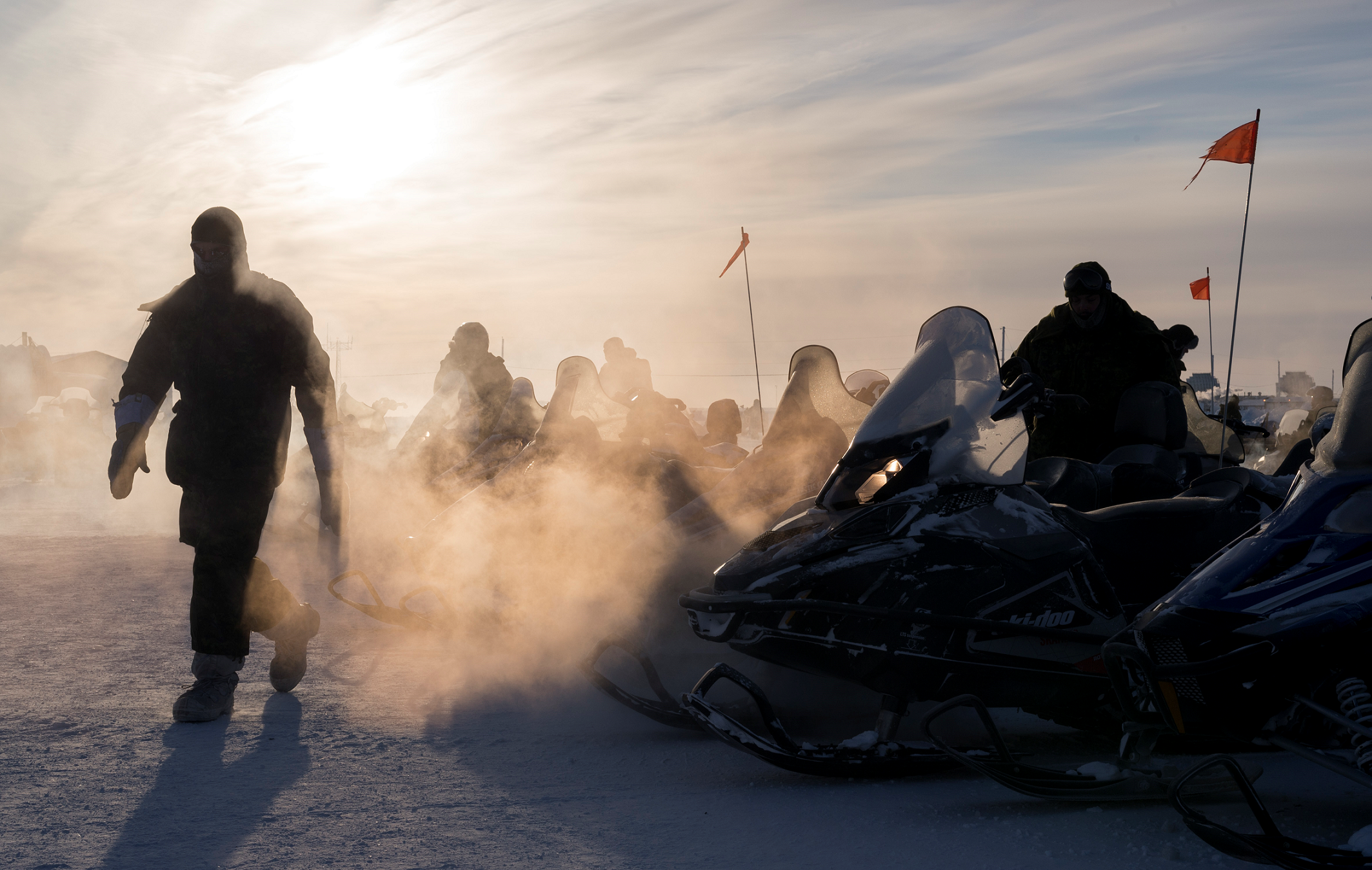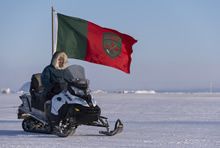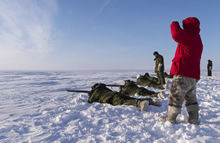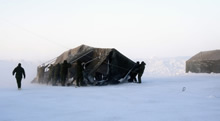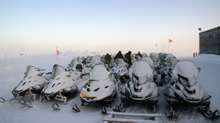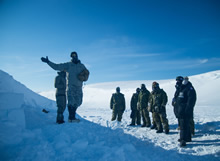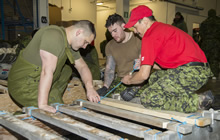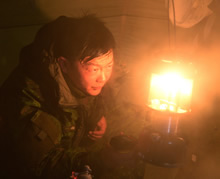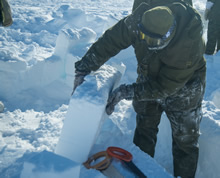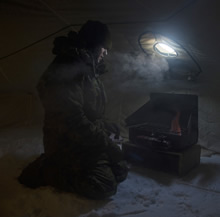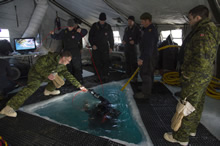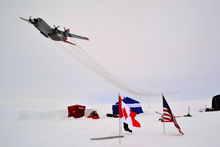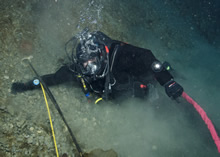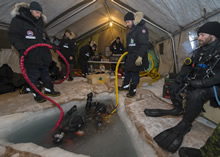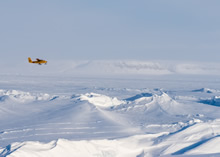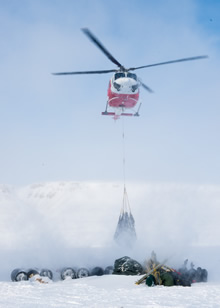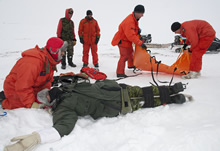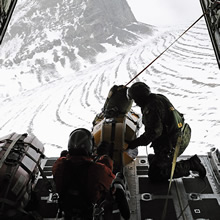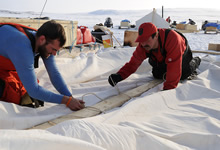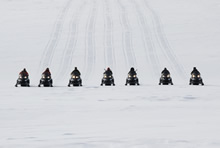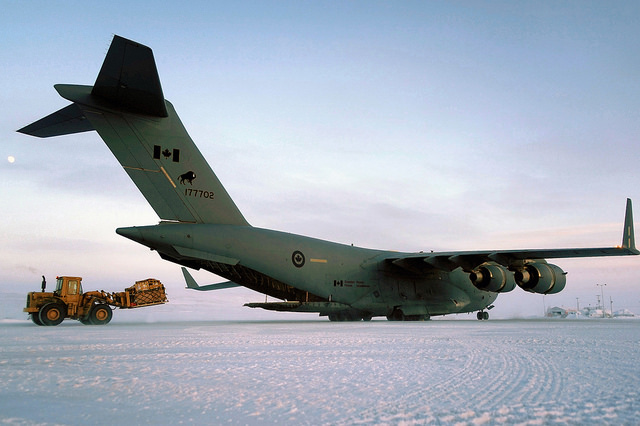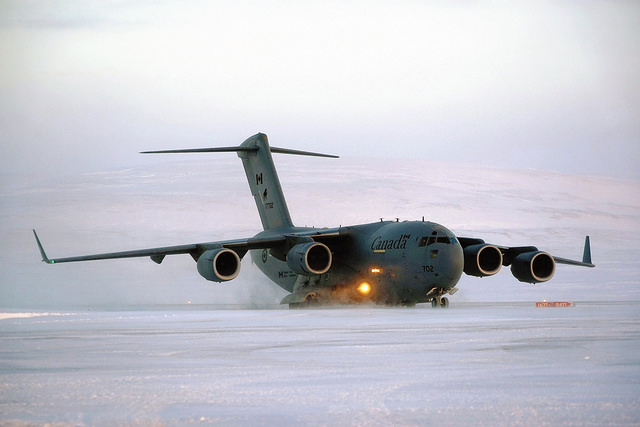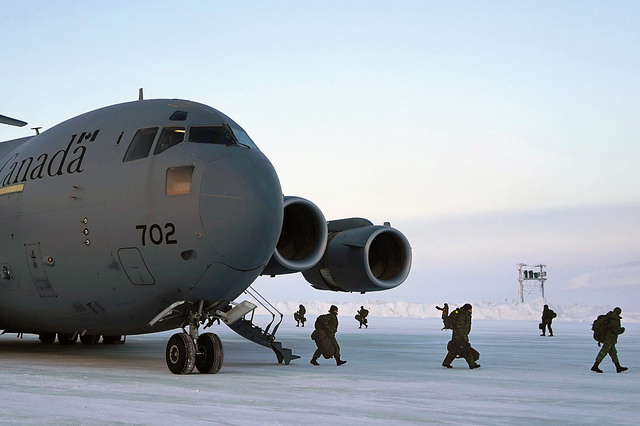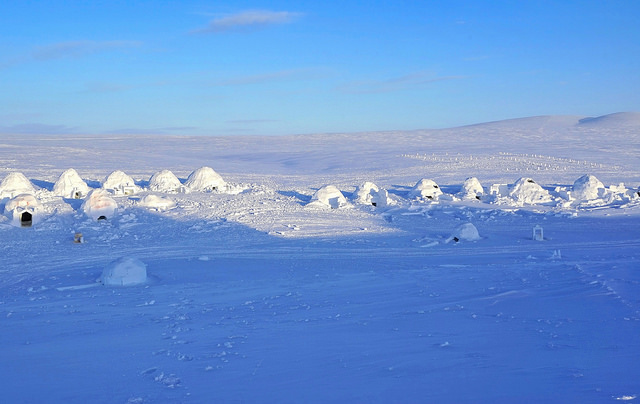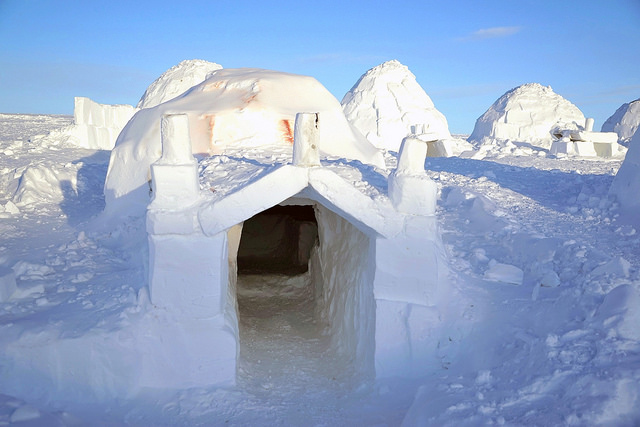Operation NUNALIVUT
Operation NUNALIVUT was a Canadian Armed Forces (CAF) operation to show a federal presence in Canada’s North. It occurred each from from 2007 to 2018. It provided a means for the CAF to:
- assert Canada’s legal status over its northernmost regions
- show that it can operate in the harsh winter conditions in the remote High Arctic
- practice its response to any situation in Canada’s North
It also allowed the CAF to:
- support scientific research in the Arctic in a meaningful way
- show that it can work well in the High Arctic with:
- military allies
- other Canadian government partners
Evolution of the operation
From 2007 to 2018, the CAF conducted a number of different operations in the North.
- Operation NUNALIVUT
- Operation NUNAKPUT
- Operation NANOOK
Now, these activities are all combined under one operation: Operation NANOOK.
The Task Force
Task Force NUNALIVUT brought together CAF members and assets from across Canada. They were drawn from any or all of the CAF branches:
- the Royal Canadian Navy (RCN)
- the Canadian Army (CA)
- the Royal Canadian Air Force (RCAF)
The force size and make-up varied from year to year. It was formed around planned activities and exercises, but always included:
- 1st Canadian Ranger Patrol Group
- 440 “Vampire” (Transport) Squadron
Operation NUNALIVUT also often included:
- Military partners from other countries
- Canadian federal departments and agencies
Global Significance
There are a number of important international issues in the Arctic:
- climate change
- international trade
- global security
The Arctic became more accessible because of climate change and new technology. For example, there were fewer than 1 000 flights on polar routes in Canadian airspace in 2003. In 2016, there were over 14,000 flights.
State and commercial actors from around the world are interested in the long-term benefits from operating in the Arctic. There are also large reserves of fossil fuels and minerals. These factors are expected to lead to increased commercial activity, research, and tourism in and around Canada’s northern region.
The increase in traffic brought new safety and security risks. Canada must be ready to respond to search and rescue cases, as well as natural or man-made disasters.
History
2018
Operation NUNALIVUT 2018 took place from February 23 to March 21, 2018. About 350 Canadian Armed Forces members took part.
Here are some of the highlights of the mission:
- Arctic survival training and over 30 patrols covering approximately 1200 km in total
- More than 40 dives through thick ice
- More than 40 community relations activities, including reading buddy programs and sports.
The operation was in two locations this year: Resolute Bay and Cambridge Bay, Nunavut.
Joint Task Force (North) commanded this operation, which included regular and reserve forces from all environments.
The CAF worked cooperatively with local and federal partners during this operation, including:
- the Kitikmeot Inuit Association
- the RCMP
- the Canadian Coast Guard
- local and territorial governments
- other government departments and agencies
Sea
Divers from the CAF, the RCMP, and the Canadian Coast Guard trained at Cambridge Bay. The CAF component included divers from the Royal Canadian Navy’s Fleet Diving Unit Atlantic, and Canadian Army combat divers from across Canada.
Land
At both locations, troops trained in Arctic survival, conducting patrols, and supporting scientific research. These troops came from 2nd Battalion Princess Patricia’s Canadian Light Infantry, the Arctic Response Company Group from 38 Canadian Brigade Group, and the 1st Canadian Ranger Patrol Group.
Air
A CC-177 Globemaster and a CC-130J Hercules transported troops, supplies, and equipment to and from Resolute Bay and Cambridge Bay. In addition, CC-138 Twin Otters provided local air transport during the operation.
2017
Operation NUNALIVUT 2017 took place in Resolute Bay and Hall Beach, Nunavut, from February 23 to March 10.
The CAF sent about 350 troops on this year’s operation. While there, they trained and conducted tasks on land, at sea, and in the air:
On the ground, CAF members patrolled and trained in Arctic survival in Hall Beach. Troops included:
- members from 12e Régiment blindé du Canada, as the Immediate Reaction Unit
- a group of soldiers from 34 and 35 Canadian Brigade Group, as the Arctic Response Company Group
- members from the 1st Canadian Ranger Patrol Group
In the water, participants conducted ice diving in Resolute Bay. They included:
- CAF members from the Royal Canadian Navy’s Fleet Diving Unit Atlantic
- CAF combat divers from across Canada
- the Royal Canadian Mounted Police (RCMP) Dive Unit.
In the air, CAF crews and air assets provided air transport. This included:
- CC-177 Globemaster and CC-130J Hercules, carried people, supplies, and equipment to Hall Beach from Yellowknife and Quebec City
- CC-138 Twin Otter provided local air transport in and around Hall Beach
The CAF worked with other government departments and agencies such as the RCMP. It also worked with territorial and local governments.
2016
Operation NUNALIVUT 16 took place from April 1 to 22. It was conducted in and around Resolute Bay and Alert, Nunavut. The operation brought together more than 230 CAF members from across Canada including:
- Soldiers from:
- 2nd Battalion, the Royal Canadian Regiment
- the 4th Canadian Division Arctic Response Company Group
- Canadian Rangers from 1 Canadian Ranger Patrol Group
- Divers from the RCN Fleet Diving Unit (Atlantic)
- RCAF members from across Canada. This included Yellowknife-based 440 (Transport) Squadron.
Op NUNALIVUT 16 participants from other countries included:
- Personnel from The U.S. Air National Guard 109th Airlift Wing
- Personnel from the Danish Sirius Patrol
The three-week operation allowed the opportunity for the CAF to:
- Exercise Canada’s sovereignty over its northernmost regions
- Demonstrate the ability to operate in the harsh winter environment in remote areas of the High Arctic
- Enhance its capability to respond to any situation in Canada’s North
- Provide meaningful support to scientific research in the Arctic
- Demonstrate working well with military allies
2015
Operation NUNALIVUT 15 took place from April 1 to 22. Joint Task Force North directed the operation. It involved more than 200 CAF members, including:
- Canadian Rangers from 1 Canadian Ranger Patrol Group (1 CRPG)
- soldiers from Third Battalion Princess Patricia’s Canadian Light Infantry (3 PPCLI)
- RCN divers from both Pacific and Atlantic fleets
- RCAF members from across Canada, including Yellowknife-based 440 (Transport) Squadron
Op NUNALIVUT 15 participants also included members of the 109th Air Squadron, United States Air National Guard.
Op NUNALIVUT 15 ran with three distinct lines of operation.
- 1 CRPG conducted a sovereignty patrol in the Victoria Island area
- 3 PPCLI conducted two separate patrols running east of Cambridge Bay
- RCN divers and Parks Canada’s underwater archeologists ran joint Ice Diving operations on the sea ice in the vicinity of Gjoa Haven, Nunavut. Ice diving operations included a joint archeological effort over the site of the HMS Erebus.
The Canadian Rangers guided and mentored southern troops throughout the operation. They also provided predator control to the deployed members.
2014
Operation NUNALIVUT 14 took place between April 2 and May 3. The operation brought together about 250 CAF members along with international allies. This included:
- 1 Canadian Ranger Patrol Group (1 CRPG)
- 1 Battalion Royal 22e Régiment (1 R22eR) C Company (Valcartier, Quebec)
- Fleet Diving Unit (Atlantic)
- 440 (Transport) Squadron (Yellowknife, N.W.T.)
- 109 Airlift Wing from New York State
Op NUNALIVUT 14 ran in three distinct locations in the Resolute Bay, Nunavut, area. The Task Force Headquarters operated out of Resolute Bay. A company from 1 R22eR conducted a patrol around Bathurst Island, Nunavut. This is about 500 km northwest of Resolute Bay. The RCN Dive Team conducted operations near Gascoyne Inlet, Nunavut. This is about 100 km east of Resolute Bay.
Task Force NUNALIVUT headquarters directed all outlying locations. The Canadian Rangers guided and mentored southern troops. They also provided predator control to the deployed members.
2013
Operation NUNALIVUT 13 ran from April 2 to 30. The operation brought together 120 participants. It focused on demonstrating:
- CAF projected capability and presence in the High Arctic during winter
- CAF ability to operate in the harsh winter environment
- CAF capacity to respond to any situation in Canada’s North.
CAF members conducted patrols on the land, in the air and on ice to keep watch over the area. The patrols extended over 600 km going:
- west as far as Mould Bay, Northwest Territories
- north as far as Isachsen, Nunavut
About 35 Canadian Rangers from the 1st Canadian Ranger Patrol Group took part in Op NUNALIVUT 13. They patrolled to establish a CAF presence between Resolute Bay and Isachsen, Nunavut. They also patrolled on Devon Island. These patrols took place in Griffon Inlet and in Gascoyne Inlet.
The RCAF sent a CC-138 Twin Otter and crew from 440 (Transport) Squadron. The aircraft was fitted with ski capability. It provided tactical airlift for, and resupply of, troops. The aircraft carried:
- fuel
- rations
- equipment
- people
The RCAF flew airlift and resupply missions all around the theatre of operations. This involved landing on the Arctic sea ice.
